Register with us
If you were living in a house that was damaged by a natural disaster, you can register with us once the Temporary Accommodation Service is activated for your region.
The registration form is on the home page of this website.
We activate the Temporary Accommodation Service in consultation with the National Emergency Management Agency. If we haven’t activated for the event you are affected by and you need help, contact your local civil defence centre.
We’ll get in touch
Once you’ve registered, a temporary accommodation coordinator will be in touch to discuss your eligibility and needs.
We understand that this is a difficult time, and we will try to get in contact with you as soon as possible. It may take us up to 5 days to get back to you to discuss your needs due to the amount of people needing our support across New Zealand.
It may be that suitable temporary accommodation for your household takes longer than this initial wait period to locate, but we will still get in touch so that we understand your needs and can quickly offer accommodation once it becomes available.
Until suitable temporary accommodation is found, you may still need to stay with friends or whānau, or other emergency accommodation.
We’ll guide you to find the right place for you
We will help you identify and source temporary accommodation options that will suit your household.
Options may include hotels and motels, existing undamaged residential housing stock, tourist accommodation, or portable cabins. In major events we have even built villages and communities.
When discussing your needs, know that different accommodation options may become available over time. In the short term, it may be difficult to meet all your needs, such as being close to work, or housing you and your pets. It is worth considering if there are ways you can be flexible with your accommodation needs in the shorter term. This will help us find you warm, dry and safe accommodation faster, while we look for accommodation that suits all your needs.
For example, if the initial accommodation available is not close to your place of work, would your employer consider flexible working arrangements for you? If it cannot take pets, is there a family member or friend who could mind your pet for you?
We can also help you connect with other services to help you get your house back up and running.
Our coordinators have helped other households find the right temporary accommodation for them and we can guide you through the process. However, you maintain control of deciding what works best for your household.
Cost for temporary accommodation
The Temporary Accommodation Service (TAS) supports households affected by an emergency to find temporary accommodation while their home is repaired or rebuilt. Households staying in TAS accommodation are required to pay a part payment towards the cost of this temporary accommodations; the remaining cost of the accommodation is covered by TAS.
The cost for temporary accommodation is set based on the lowest quartile of market rent for the affected region, minus 10%.
If you have insurance, we recommend you check your insurance policy as some policies will cover some temporary accommodation and associated costs.
Public and community housing tenants
If you were a public or community housing tenant at the time of the emergency, it is important that you let your assigned Matching and Placement Coordinator know.
Financial assistance
If you're concerned that your household can't afford the part payments, you can check whether you're eligible for financial assistance from the Ministry of Social Development:
Applying online is the fastest and easiest way to get make an application for financial assistance
You can also call Work and Income on 0800 559 009.
